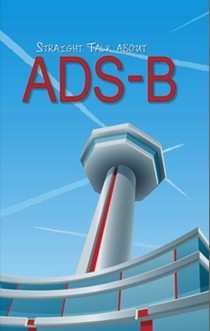Wed, Feb 25, 2015
EAA Received Assurances At ‘Equip 2020’ Meeting In D.C. That Experimental Aircraft Are Not Required To Install TSO ADS-B Equipment
Last week ANN reported that rule clarifications requiring ADS-B to be installed by the year 2020 could result in non-TSO ADS-B equipment being okay for experimental airplanes. EAA has just released an announcement that says they have now confirmed this is the case.

At an “Equip 2020” meeting involving the FAA, aviation groups, and industry officials this week in Washington, D.C., the agency restated their intent to ensure that the year 2020 mandate for ADS-B “out” installation would allow experimental category aircraft to install non-TSO equipment that meets TSO performance specifications. Such an allowance would support greater compliance with the mandate by reducing costs for such equipment and maintaining the freedom traditionally found within the experimental category.
“The FAA maintained the same position as during the EAA/FAA winter summit earlier this month: It wants to keep the pathway to compliance as simple as possible,” said Sean Elliott, EAA’s vice president of advocacy and safety, who attended the meeting along with Doug Macnair, EAA’s vice president of government relations. “It’s important that the innovation and flexibility available through the experimental category, which often leads to improvements for the entire GA fleet, is not hindered by a specific mandate such as an ADS-B TSO requirement.”
EAA has committed to helping the FAA with language that would help clarify and provide guidance for experimental category aircraft owners and builders for ADS-B equipment and installation. Historically, builders and owners of experimental aircraft have been able to install avionics that meet the performance standards of certified equipment but are not specifically approved by the FAA. Even in IFR-equipped aircraft, avionics do not have to be approved devices and can be installed by the aircraft builder or by an A&P mechanic.
While the 2020 ADS-B mandate applies to all aircraft that will operate within airspace that requires an altitude encoding transponder, there are unique provisions and opportunities within the amateur-built regulations that may allow owners of experimental aircraft to meet the requirements with greater flexibility and potentially lower cost. That could specifically mean, for instance, the ability for a builder to individually install certified ADS-B systems, or seek out non-certified ADS-B systems that meet the mandate’s performance standards.
(Image from file)
More News
About 2132 And At 11,800 Ft MSL, The Airplane Began A Rapid Right Spiraling Descent On August 18, 2025, about 2133 central daylight time, a Lancair NLA-275-FR-C airplane, N345LA, w>[...]
Aero Linx: The Collings Foundation The Collings Foundation is a non-profit, Educational Foundation (501(c)3), founded in 1979. The purpose of the Foundation is to preserve and exhi>[...]
"This first FAA certification enables us to address the pilot shortage crisis with modern training solutions. Flight schools need alternatives to aging fleets with 40-year-old desi>[...]
North Atlantic High Level Airspace (NAT HLA) That volume of airspace (as defined in ICAO Document 7030) between FL 285 and FL 420 within the Oceanic Control Areas of Bodo Oceanic, >[...]
“HITRON embodies the Coast Guard’s spirit of innovation and adaptability. From its humble beginnings as a prototype program, it has evolved into a vital force in our co>[...]
 NTSB Prelim: Lancair NLA-275-FR-C
NTSB Prelim: Lancair NLA-275-FR-C ANN's Daily Aero-Linx (09.12.25)
ANN's Daily Aero-Linx (09.12.25) Aero-News: Quote of the Day (09.12.25)
Aero-News: Quote of the Day (09.12.25) ANN's Daily Aero-Term (09.12.25): North Atlantic High Level Airspace (NAT HLA)
ANN's Daily Aero-Term (09.12.25): North Atlantic High Level Airspace (NAT HLA) Aero-News: Quote of the Day (09.13.25)
Aero-News: Quote of the Day (09.13.25)



